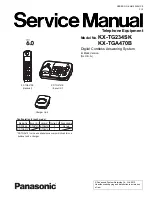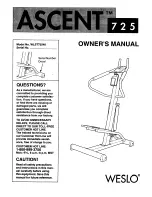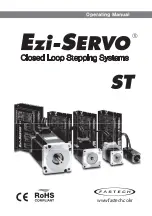
190
DP-1910F
Cleaning:
After transfer, residual toner remains on the drum surface, and for next printing, the residual toner reaches
to the development area via charge and exposure. The charge level of the OPC corresponds to the white
background is +900 VDC, and the bias voltage of the Conductive Roller is approx. +350 VDC. Therefore,
the positively charged residual toner on the OPC Drum is attracted and collected to the Conductive Roller.
The charge level of OPC after exposure is +100 VDC. So, the printing area of the OPC is cleaned.
6.3.2.4.
Transfer
As the paper is fed between the drum and the Transfer Roller, a high negative charge is applied to the back
of the paper. The positive toner particles are then attracted from the drum surface to the paper. After
transfer, the paper is separated from the drum surface by the curvature of the drum.
6.3.2.5.
Fusing
The paper passes through the Fuser Rollers and is subjected to heat and pressure. The fusing temperature
is approximately 190
°
C (374
°
F), and the pressure is approximately 0.36 k
g
/cm (3.53 N/cm). This bonds, or
fuses the toner into the paper.
6.3.3.
Paper Feed
Media Tray
The main motor drives the Pick Up Roller after the Pick Up Solenoid is energized, which engages the Pick
Up Roller Clutch and feeds a sheet of paper. The paper is pushed to the Paper Feed Roller, which
overdrives the paper slightly causing a buckle to ensure the paper is aligned with the stationary Registration
Roller.
While triggering the Registration Sensor notifying the CPU paper is ready to feed.
6.3.4.
Laser Scan Unit (Exposure)
6.3.4.1.
Operation Theory
The light beam from the Laser Diode (light source) is modulated by the digital signal (nVIDEO) and
converted to parallel light waves by the Collimator Lens. The beam is then sent to the rotating Polygon
Mirror (polygon scanner), where it is reflected through the
Lens and then focused onto the OPC Drum
surface. The diameter of the beam is about 80
µ
m, and the light moves across the surface of the OPC Drum
in the scanning direction of right to left. As the drum rotates (sub-scans), a static image is formed where the
laser beam touches the drum surface.
The laser beam is also deflected to the Timing Sensor. This sensor controls the start timing of scanning on
the drum, providing a consistent left margin. The CPU uses the Timing Sensor to detect abnormal signals.
Feed Roller
Pick Up Roller
Pinch Roller
Pickup Solenoid
Registration Roller
Registration Sensor
Paper Path Sensor
Содержание e-studio191f
Страница 1: ...SERVICE MANUAL PLAINPAPERFACSIMILE e STUDIO191F File No SME11005000 R110321J1200 TTEC Ver00_2011 04 ...
Страница 22: ...22 DP 1910F 1 2 Control Panel For USA and Canada TOSHIBA DP 1910F ...
Страница 225: ...225 DP 1910F memo ...
Страница 226: ......
















































